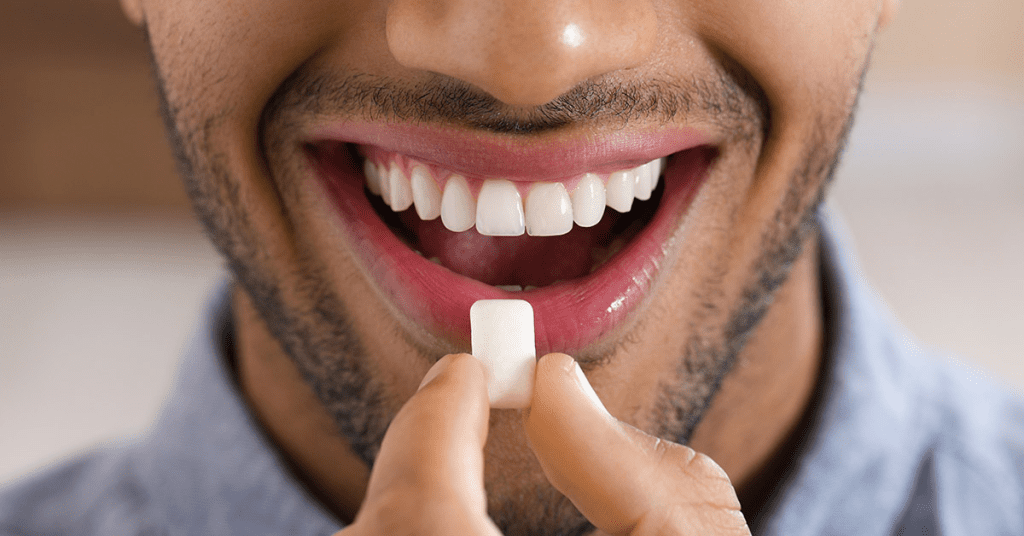Chewing gum is a quick and popular way to freshen your breath, but have you ever wondered what’s actually in it? It’s easy to assume it’s all sugar and flavoring, but the truth about gum ingredients might surprise—and even disturb—you. Here, we take a closer look at the unexpected components found in that small stick of gum and the surprising origins behind them.

From Natural Sap to Synthetic Substances
Historically, chewing gum was made from natural tree sap, specifically from the Sapodilla tree in Central America. Known as chicle, this sap created the original chewy texture that defined gum. But as demand for gum grew, manufacturers shifted to synthetic materials that were easier and cheaper to produce. Now, instead of chicle, most gum bases are made from polyisobutylene, a synthetic rubber commonly used to make inner tubes. This ingredient gives gum a more durable texture, but knowing it’s related to rubber might make some think twice before reaching for another piece.
Yes, There’s Rubber in Your Gum
The rubbery consistency of chewing gum is no accident. Polyisobutylene, which forms the bulk of most gum bases, is mixed with food-grade plasticizers to create that familiar chewiness. According to BBC Science Focus, “polyisobutylene is mixed with plasticizers and materials—all food grade—to make the gum mixture chewable.” This material is designed to soften at body temperature without breaking down, ensuring a long-lasting chew. Although it’s deemed safe for consumption, the idea of chewing rubber can be unsettling to some, especially those who prioritize natural ingredients.
The Hidden Ingredient: Lanolin from Sheep
One of the lesser-known ingredients in chewing gum is lanolin, a waxy substance derived from the skin glands of sheep. Yes, you read that right. This natural secretion, commonly used in skincare products, is sometimes added to chewing gum to improve texture and give it a glossy finish. A recent viral tweet pointed out that lanolin “has a high chance of being in your favorite chewing gum,” yet because it’s standardized as part of the gum base, companies don’t need to list it as a separate ingredient. For those avoiding animal products, this discovery has been shocking.
Artificial Sweeteners: Aspartame Controversies
Another surprising component in many modern gums is artificial sweeteners, with aspartame being a common choice. Aspartame is about 200 times sweeter than sugar, allowing gum makers to use less product while keeping the taste strong. While this reduces calorie content, aspartame has sparked controversy. According to the Mayo Clinic, aspartame is considered safe in moderate amounts, but some studies have linked excessive artificial sweetener intake to increased risks of stroke, heart disease, and other health issues. Though research is inconclusive, many consumers prefer to avoid artificial sweeteners altogether.
BHT: The Preservative with a Bad Reputation
Butylated hydroxytoluene (BHT) is a preservative found in some gums to keep them fresh. While the Food and Drug Administration (FDA) considers BHT safe in small amounts, studies on animals have linked high doses to cancer risk, which has fueled concerns about its use. The amounts of BHT in gum are minimal, but the presence of such a controversial preservative still makes some people wary.

Is Chewing Gum Bad for Your Health? Beyond the Ingredients
Beyond the ingredients list, excessive gum chewing itself can lead to health problems. Chewing for extended periods can strain the jaw muscles, potentially leading to temporomandibular joint disorder (TMJ). TMJ causes pain, inflammation, headaches, and even earaches. Over-chewing has also been linked to migraines in children and teenagers. So, while an occasional stick of gum may be fine, moderation is key for regular gum chewers.
Natural Alternatives for a Healthier Chew
For those looking for a more natural chewing experience, some brands still use plant-based ingredients like chicle, the original gum base. Other natural options include corn zein, a protein found in corn, which provides a similar chew without synthetic components. These plant-based alternatives might be less common and slightly pricier, but they cater to consumers seeking a gum experience closer to nature.

Myth Busted: What Happens if You Swallow Gum?
One of the longest-standing myths about gum is that swallowing it leads to a sticky buildup in your stomach. This, fortunately, isn’t true. While gum base is indigestible, it passes through the digestive system much like other fibrous materials. According to BBC Science Focus, swallowed gum “continues its merry way along your digestive tract” and exits the body naturally. So, while it’s safe to swallow a piece of gum occasionally, that’s not an excuse to turn it into a habit.
Reactions to the Ingredients: Why Awareness Matters
The surprising ingredients in chewing gum have shocked many consumers, prompting them to reconsider their choices. Knowing that a single piece of gum can contain rubber, lanolin from sheep, artificial sweeteners, and chemical preservatives is enough to make anyone question what they’re chewing. And while these ingredients are FDA-approved, consumer awareness is on the rise, driving some to seek out cleaner, more natural alternatives.

Final Thoughts: Chew with Caution and Consider Your Options
The revelation of what’s really inside chewing gum serves as a reminder to look beyond the packaging and think twice about what we consume daily. Whether or not these ingredients bother you, it’s good to know your options. From synthetic rubbers to animal-derived additives, chewing gum today is a far cry from its natural origins. For those seeking a more natural chew, plant-based options are available, providing a healthier alternative without compromising that satisfying chew.
In the end, whether you stick with traditional gum or opt for a cleaner version, being aware of what’s in your gum allows you to make an informed choice about what you put in your mouth. So next time you reach for a stick, remember: you’re not just choosing a flavor—you’re choosing what you want to chew on, too.


